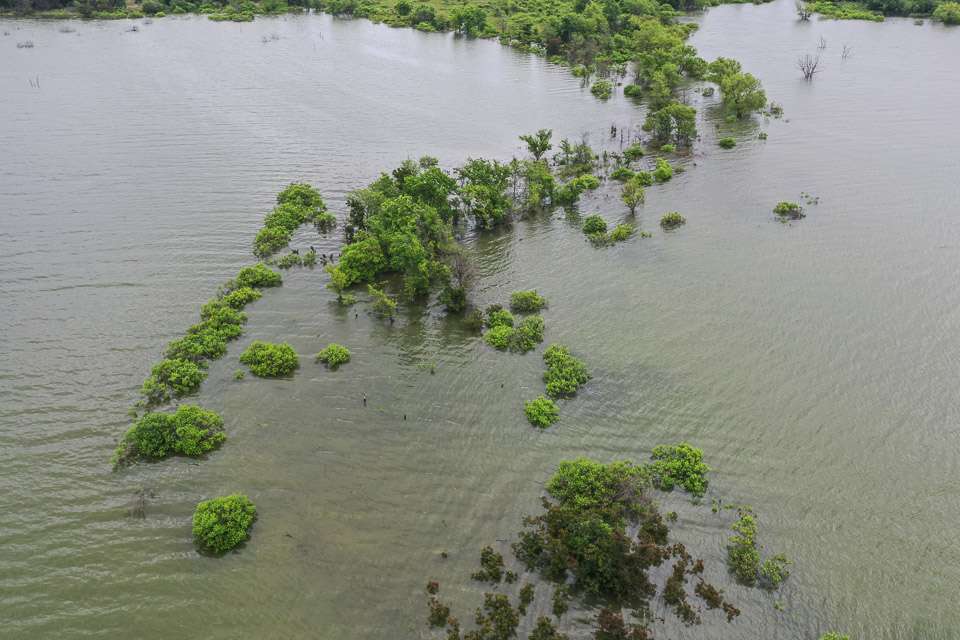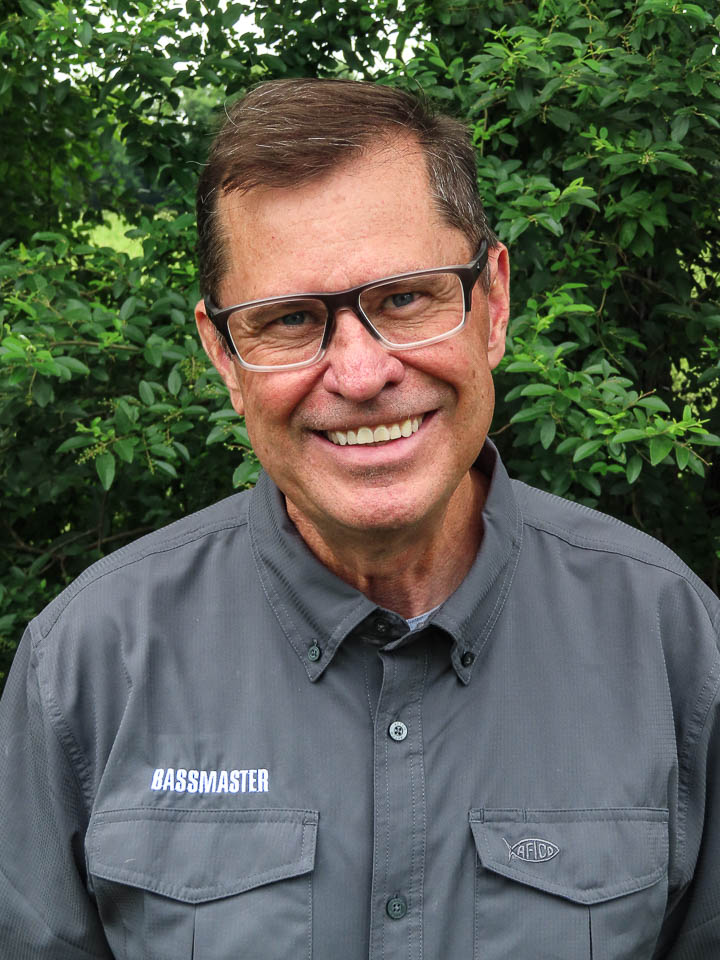
FORT WORTH, Texas — An obscure anomaly could be a huge factor at the 2021 Academy Sports + Outdoors Bassmaster Classic presented by Huk. Actually, two unusual circumstances might be potentially in play at Lake Ray Roberts.
In 2006, the decades-old tradition of summertime Classics shifted to late winter/early spring. Here we are though, back with a mid-June event in Texas. More profound, and potentially more impactful, is the current state of the Classic fishery.
Tropical moisture filled the North Texas skies in the days preceding the Classic, bringing with it unseasonably prolific rainfall. Ray Roberts is currently four feet above summer conservation pool. The U.S. Army Corps of Engineers has no plan to drop the water to normal pool. The lake is void of shoreline residential real estate, and five feet is very manageable considering the summer drought season to come.
Yet, the watershed’s mostly flat terrain creates an ideal environment for the water to inundate shorelines that are usually high and dry during summer. Five feet of water goes a long way here.
Take a look at the photo taken with the B.A.S.S. drone on Wednesday, the Official Practice Day, and you get a snapshot of what the lake looks like. That meandering line of trees grows on a peninsula that is normally out of the water. The same look applies along the flat, narrowly tapering shoreline.
There is an overabundance of trees, bushes and even weedy grasses that have created plenty of ambush cover for the largemouth, and the same for bluegill and shad. The lake is completely surrounded by this scenario.
Ronnie Moore, Bassmaster LIVE analyst, rode with Patrick Walters on Wednesday. He told me about seeing large numbers of white bass feeding on shad in shallow water. That leaves strong reason to believe the high water, new cover and baitfish have supercharged the shoreline bite.
Shad/baitfish, white bass, and largemouth bass are all there. What else is worth noting is overcast skies dominated the Wednesday practice day.
All the above makes sense why I never saw a Classic boat in the offshore water. In fact, finding the anglers was a challenge, and the reason why was the boats were scouting all that new water. Being concealed in a remote creek or cove, and maneuvering through the concealment of the new cover, made them tough to see.
Keeping in mind it was practice, and the last call for going all out to pattern the bass, that could mean a couple of things. One, the anglers are eliminating that shoreline cover, because there is so much. Or it could mean they have dialed into that bite.
Here’s my disclaimer. It’s all hearsay and limited to my very narrow view of what’s going on after spending the day on the lake. Below are some of the conversations that I had with anglers during Media Day about the above topic. Some of the comments might surprise you.
Chris Zaldain
“There is a lot of new water to fish, which we didn’t expect to see here in June. On Bassmaster LIVE and on the live FOX coverage, when there is a ‘four box’ what I think you will see is four guys, all doing the same thing. That will be fishing around flooded bushes.”
Bill Lowen
“The challenge we are facing is so much water backed up in the woods. It’s difficult to gain access to a lot of the fish, because they are in extremely shallow water that goes back a long way. I’d like to see the water fall, if only for a couple of inches, to bring some of those fish back out to where we can catch them. I’m being optimistic, but I don’ think that’s going to happen.”
Frank Talley
“There will always be an offshore bite, but around here there is a difference in how you define it. An offshore bite here isn’t necessarily a deep bite in the true sense of the word. Deep here can be off away from the bank, in 5- to 7-feet of water. Right now, that’s the original bank line. So, there will be some caught offshore, but no deeper than 15 feet.”
Talley continued, “in the shallow are flooded bushes, anywhere from 5 foot of water, to the true bank line. Here is the twist. There is a natural bank line that runs around this lake. Much of water that is behind that line is still in around 1- or 2-feet of water. That zone extends back 60 to 70 yards, or nearly a football field in size. There is a lot of fish that have pushed back into that water, and you can’t access them. Those fish are just back there, eating away. We might never get to make a cast at them.”
Kyle Welcher
There is a decent amount of postspawn bass. Some are fry guarders and others are out deep. Those latter fish moved out before the rainfall flooded the banks. Those fish are out in 20 feet of water, and they aren’t moving in just because the water came up. What that means is you will be able to catch some offshore, out of the flooded timber, some on the original bank line, or in the new shoreline grass, if you can get to it. Everything is going to be in play this week; it will come down to which of us can connect with the right females.”
Luke Palmer
“Of course, it’s added more water and structure. The water is finally stabilizing, and that is key. What I’ve experienced just north of here, in Oklahoma, is the fish dislike rising water. They are more reactive after it stabilizes, and they are acclimated to their environment. I think we have that now.”
Hunter Shryock
“We didn’t plan for all this water, but it sets up better for me. The high water has kept some of the postspawn fish in shallow water. Normally, they would be moving offshore for the summer. The shallow fish are scattered, but at least the shallow water guys, like myself, have a shot at staying in the game. I plan to just burn up the shallow water, flipping and pitching at what looks best.”
Brock Mosely
“I think time management will be more important than ever this week. I caught a few prespawn fish during practice. There are some postspawn fish in deeper water. And then you have the flooded shoreline setup. What it will come down to is where you commit the most time. Do you want to spend it 50 yards back in the bushes, or focus on more accessible areas?”

